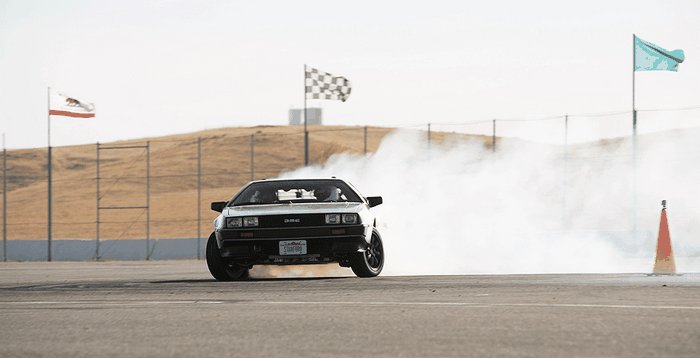Stanford Goes 'Back to the Future' With a Self-Driving DeLorean

Despite the wishful thinking of the 1989 science-fiction film "Back to the Future Part II," in which scientist Dr. Emmett Brown and all-American teenager Marty McFly ride a time-traveling DeLorean DMC-12 forward by 30 years to Oct. 21, 2015, those futuristic gadgets still haven’t become a reality. (No matter what Lexus says.)
But on Tuesday, on the eve of what has become known as “Back to the Future Day,” Stanford University researchers unveiled a self-driving DeLorean that can burn rubber under robot control, suggesting the future might not be so dismal after all.
The car, nicknamed Marty after Michael J. Fox’s character in the film, does doughnuts with near-flawless precision. The researchers ultimately want Marty to drift around corners better than any human race car driver, because if self-driving cars are able to function at the limits of grip, they may be able to avoid crashes in extreme scenarios.
“We aren’t literally envisioning roads full of automated vehicles that can produce clouds of white tire smoke,” said Chris Gerdes, the Stanford professor who led the project, “though that would be cool.”
At an event Tuesday evening hosted by special effects guru Jamie Hyneman, co-host of the Discovery Channel TV show “MythBusters,” Stanford released a video of Marty filmed at Thunderhill Raceway Park north of San Francisco.
Unlike the DeLorean from "Back to the Future," Marty does not require plutonium. It lacks the mythical flux capacitor from the movie DeLorean, which required 1.21 gigawatts of electricity, equivalent to the output of a small nuclear power plant.
Instead, Stanford students rebuilt the DeLorean as an electric car with help from Renovo Motors, a startup building an all-electric $529,000 supercar. Renovo outfitted Marty with two electric motors and transmissions to shift power in milliseconds between the rear wheels, a technique known as torque vectoring.
Christopher Heiser, the CEO of Campbell, Calif.-based Renovo, said the combination of Stanford’s automated driving software and Renovo’s lightning-quick power delivery system allows Marty to “do things that no human can do.”
Time travel, unfortunately, isn’t one of them.

Related News


